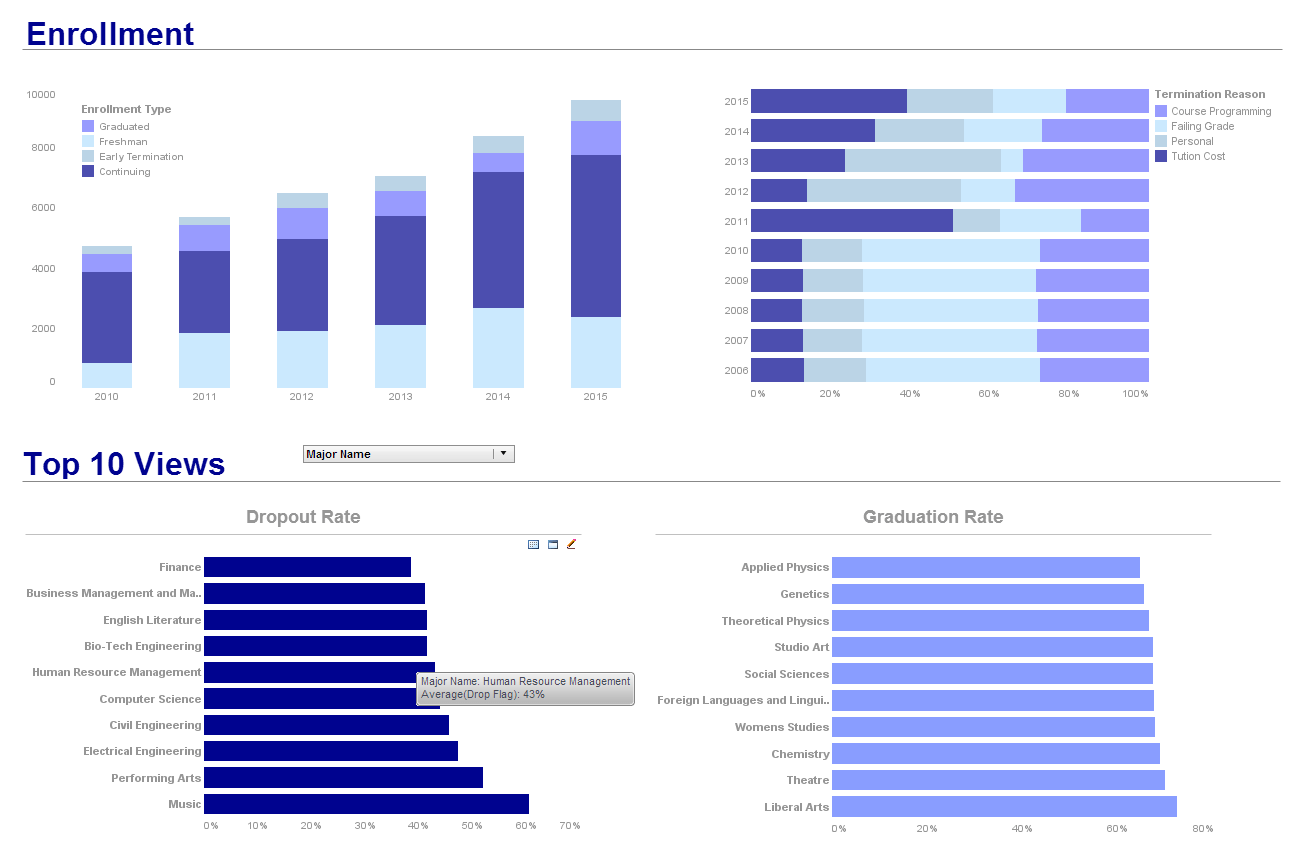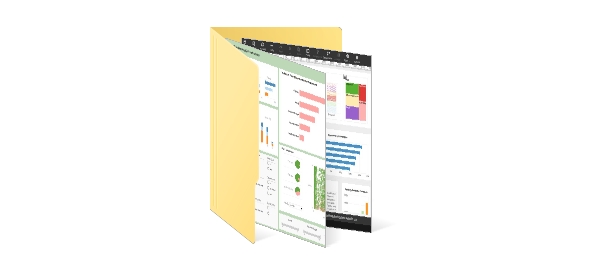InetSoft Webinar: Headline Feature of New Product Release is Mobile BI
This is the transcript of a Webinar hosted by InetSoft on the topic of "What's New in InetSoft's Business Intelligence Software". The speakers are Mark Flaherty, CMO at InetSoft, and Amanda Pleasant, Principal Technologist at InetSoft.
Mark Flaherty: Welcome everyone. Welcome to InetSoft’s Webinar on what’s new in our version 11.1 release. The headline feature is mobile BI. My name is Mark Flaherty and I head up marketing here at InetSoft and with me is Amanda Pleasant, Principal Technologist.
So we have a pretty simple agenda today. First, we are going to start off and talk about a couple of InetSoft news items and then some trends we are seeing among our users that might be interesting to you. And then we will give you a preview of the highlights of the new features in this release and spend a little time on a live demo that will be a review and also stress what is new with new release.
And then we will have time for question and answers, and so you may note to just go ahead and type in your questions inside in GoTo Webinar question panel. We will answer those at the end. And also, just to remind you we are recording the webinar and we will send out a link to the recording sometime next week, so you will be able to share it with your colleagues.
New Developments in BI
First, some of the new interesting developments: we have had a couple of interesting applications created with some of our partners, I just want to mention, that might be of interest to you as well. The first one is from our partner MSI, and they have had a very interesting financial reporting solution for some time now.
And now we are using our software to provide dashboards and visual analysis to it. This financial reporting solution is really effective for companies that have multiple locations, multinationals with locations in different countries and therefore, the budgets and results are in different currencies.
The financial consolidation application combines all those different currencies and creates a consolidated budget and forecasting environment. And the one thing it's good for is, if some of you are in a large organization, you have acquired other companies and you have to run different financial systems, different financial ERP systems, this solution has connectors. Those data sources can be brought together for a single solution. And they also provide services to create the data model that’s going to be specific to a given organization’s financial structure.
The second one is from a partner of ours called CampionPPS, and they have been specializing in performance management, particularly with manufacturers and organizations using the Baan ERP platform. Now they have created a solution there for people using the Baan system where it makes dashboards reports built from the Baan data. In addition that data can be mashed up with any other enterprise data for that matter.
Also they provide implementation services and then consulting services to get most out of that manufacturing reporting solution. And also along the same lines, I just wanted to mention to any of the attendees today who have product solutions that take advantage of InetSoft software and have an interest in us promoting those to our customers or prospects, contact me after webinar and we can talk about how to do that.
The last thing we are going to point out here is one of the big trends in business intelligence we are seeing, some applications that we are seeing among customers these days. We have been talking about data mashup for a few years. Especially in the past year or so, we are seeing quite a lot of interest in taking advantage of the capabilities and the applications of mashups.
So I wanted to share a couple of those. It might pique interest for you as well. Naturally, it's a great solution, quite an easy and agile solution for combining different data sources, different operational data sources, even data warehouses plus operational data sources, without having to go through that lengthy ETL and data warehouse update process to incorporate new data. That’s one obvious case.
Offshore Decommissioning Contractor Adopts Open Source StyleBI to Bypass Lengthy ETL and Warehouse Cycles
For an offshore decommissioning contractor, data arrives from a bewildering array of systems: vessel telematics and AIS feeds, project management systems, subcontractor invoices, regulatory filings, GIS seabed surveys, ROV inspection reports, environmental monitoring sensors, procurement ERPs, and weather services. Traditional analytics approaches push all that data through a heavy extract-transform-load (ETL) pipeline into a central data warehouse before any reporting or analysis can happen. The result is slow visibility, brittle integrations, and stretched budgets as each new data source requires mapping, transformation, and often expensive warehouse schema changes. Using the open source StyleBI approach — a lightweight, mashup-first BI layer — allows a decommissioning contractor to combine heterogeneous enterprise data on demand without waiting for the warehouse team to schedule another ETL run.
At its core, StyleBI’s open source model treats the BI layer as the place where joins and transformations happen, rather than forcing every upstream system into a single canonical schema. Connectors or adapters read from source systems in place (APIs, S3 buckets, CSVs from survey vendors, SQL access to ERP), expose metadata, and enable the analyst or dashboard author to define relationships, calculated fields, and filters inside the BI tool. For a decommissioning project manager who needs to cross-reference an ROV inspection log with the current equipment removal schedule and the latest weather forecast, that means a dashboard can be composed and refreshed quickly — often in minutes — without waiting for a weeks-long ETL and warehouse deployment cycle.
Operationally, that speed translates directly into better decision-making on the water. Day-to-day decommissioning activities are sensitive to weather windows, vessel availability, and regulatory hold points. When a subcontractor uploads a revised lift plan or an inspection team reports new corrosion anomalies, the ability to immediately blend that input with current asset lists, contract line items, and historical lift performance helps planners re-sequence tasks or reallocate vessels before costs balloon. The BI mashup pattern also supports “what-if” scenario exploration — for example, estimating how a two-day weather delay cascades across multiple mobilizations — without the overhead of reshaping the warehouse schema or running full re-ingestion jobs.
There are clear cost advantages as well. Data warehouses and frequent ETL runs are expensive: compute costs for large ingests, storage for multiple copies of data, and engineering time to maintain pipelines. By adopting an open source StyleBI layer that reads from live sources, a contractor can reduce the frequency of heavy warehouse updates and use the warehouse selectively as a curated historical store rather than the primary copy of every system. This hybrid pattern — live mashups for operational dashboards and targeted warehouse tables for aggregated historical metrics — achieves the visibility teams need while substantially lowering pipeline complexity and cloud bills.
Governance and data quality are often raised as counterpoints to any “warehouse-less” architecture. In practice, a mature StyleBI deployment addresses these through a combination of centralized metadata, semantic models, and role-based access. The BI layer becomes the canonical place for approved business definitions (for example, how “mobilization cost” is calculated across vendors), and connectors can enforce read-only or masked views for sensitive data like personnel records or contract pricing. Additionally, the BI environment can implement provenance tracking so every cell in a dashboard links back to its source system and extraction time — an essential capability for audits and regulatory submissions during decommissioning projects.
Performance considerations are pragmatic rather than theoretical. Live joins across dozens of operational systems can be slow if naively executed at query time. StyleBI implementations typically use intelligent caching, incremental refreshes, and pushdown optimizations so that expensive joins are computed and cached on a schedule aligned to operational needs (near-real-time for telemetry, hourly for financials, daily for vendor reports). For massive geospatial datasets like high-resolution bathymetry, the common pattern is to keep spatial tiles in a dedicated spatial store and use the BI layer to reference summarized geometries — preserving interactivity while avoiding the cost of pulling full datasets into memory on every query.
From an integration standpoint, the open source nature of StyleBI is a strategic advantage for contractors in a complex supply chain. Many offshore projects rely on niche vendors with bespoke file formats or legacy FTP drops. Open source connectors can be extended or forked to handle those idiosyncrasies without waiting on vendor roadmaps. This flexibility reduces vendor lock-in and empowers internal teams to adapt the integration logic quickly when new partners join a project or reporting requirements change — a frequent occurrence in multi-year decommissioning contracts spanning multiple jurisdictions.
Adopting a mashup-first BI approach also improves collaboration between technical and non-technical stakeholders. Project engineers and planners can prototype dashboards and data blends in a self-service manner while data engineers focus on validating connectors, managing governance policies, and optimizing long-running aggregations. That separation of responsibilities accelerates innovation: operations get dashboards that match their workflows, and central teams retain control over data quality, lineage, and compliance.
There are some caveats. Not every dataset or analytic workload is a good fit for live mashups. Long-term trend analysis that depends on consistent historical snapshots or machine learning pipelines that require large, denormalized feature stores still benefit from a warehouse-centric approach. For these needs, the recommended pattern is hybrid: use StyleBI mashups for operational, exploratory, and tactical reporting while feeding a reduced, modeled subset of data into the warehouse for retrospective analysis and predictive modeling. This pragmatic split avoids ideology — both approaches are tools in the toolbox.
Practical rollout advice for a decommissioning contractor: start with a single high-value use case, such as a mobilization dashboard that combines vessel schedules, crew certifications, equipment inventories, and weather windows. Prove the ability to reduce time-to-insight and demonstrate cost savings relative to the status quo before expanding to inspection analytics or environmental compliance reporting. Invest early in semantic modeling and access controls so that self-service does not become an excuse for disconnected, inconsistent metrics. Finally, measure success not just in dashboards delivered, but in decisions accelerated and cost overruns avoided.



